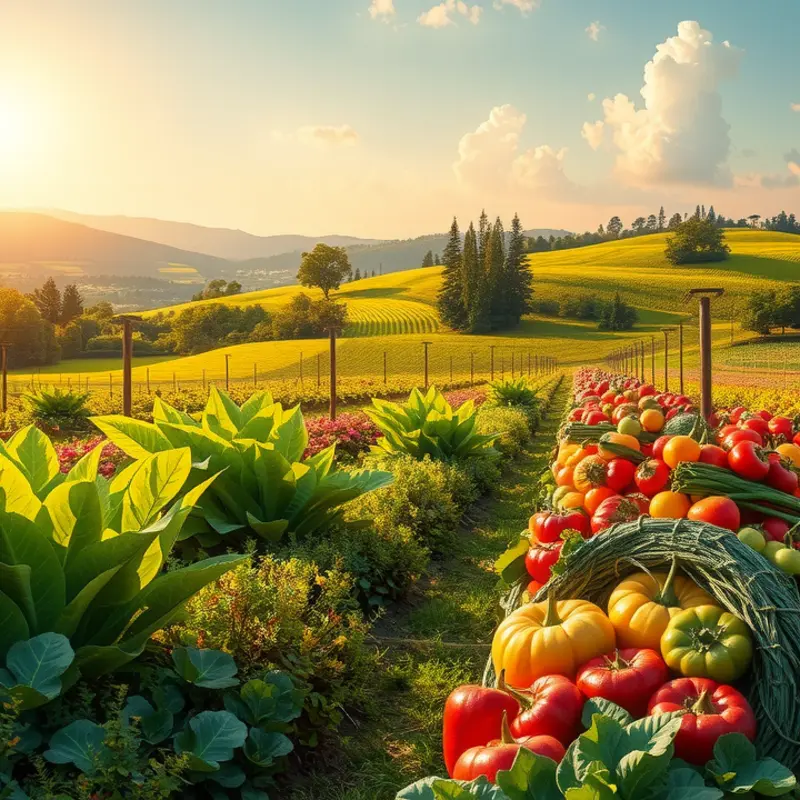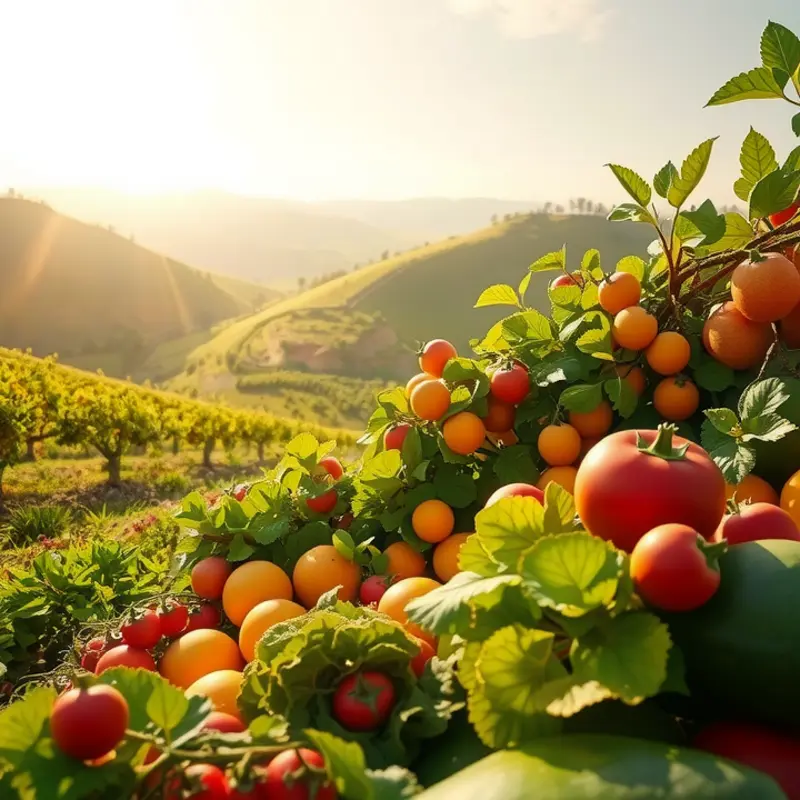Traditional open-air markets are the beating hearts of cities around the globe, where locals gather to exchange not just goods but stories, culture, and an array of flavors. These lively venues offer insight into the culinary traditions that shape each region’s identity, making them a paradise for food enthusiasts and the culturally curious. Whether you’re wandering through the colorful stalls of a Moroccan souk or perusing the lush produce of an Asian wet market, each visit provides an opportunity to savor the unique food cultures of the world.
A Tapestry of Senses: The Experience of Open-Air Markets

Amid the bustling activity of a traditional open-air market, a vivid tapestry of senses comes alive. Each step offers new sights, sounds, and aromas that tell stories unique to their setting. The cacophony of vendors enthusiastically advertising their wares blends with the chatter of locals and echoes under the canopy of a thousand-colored tarps.
La Boqueria in Barcelona captivates with its maze-like alleys, vibrant displays of Mediterranean delights, and the seductive scent of jamón ibérico curling around you. The air here carries a sweet mixture of citrus from mountainous piles of oranges and the salty tang of seafood fresh from the Catalonian coast. As you wander, tantalizing displays of cheese beckon with rich hues and deep, earthy aromas. The market’s pulse is felt through lively interactions and the harmonious blend of old-world charm and modern culinary innovation.
Moving east, the Grand Bazaar in Istanbul offers an entirely different experience. Stepping inside is like entering an intricate world where the past dances with the present. The sound of merchants’ calls is almost musical, stories woven through their language. Spices, piled high like dunes, create a rainbow of flavors waiting to be explored. Each heap offers something different—sumac, turmeric, and cinnamon compete for attention with their heady aromas. Sampling Turkish delight is an adventure in itself, each cube revealing a sweet secret infused with nuts or rose petals.
For a change in pace, the floating markets of Thailand redefine the concept of shopping. Here, boats laden with tropical fruits glide past each other, their vendors engaging in animated exchanges. The air is thick with the fragrance of ripe mangoes and bananas. Street food vendors on the banks entice with sizzling pans of pad Thai and savory soups, their aroma floating over the water, promising a feast beyond imagination. This market seamlessly merges the fluidity of its environment with the vibrancy of Thai culture.
These markets, each distinct in flavor and ambiance, speak to the heart of their communities. They are living displays of cultural heritage and are integral parts of the local way of life, offering both sustenance and social connectivity. The rich tapestry of experiences offered by open-air markets reminds us to savor the simple joy of tactile and sensory engagement with our food. For further insights into global culinary influences, consider exploring how trade impacts the ingredients we use.
Artisans at Work: The Craft of Traditional Food Sellers

In the heart of bustling European markets, cheese mongers stand as artisans presiding over arrays of artisanal cheeses, each with its own story. The science of turning milk into cheese is an age-old craft, practiced with precision in French marchés. Here, wheels of Camembert and wedges of Brie are not merely products but cultural expressions. These skilled vendors conduct delicate aging processes that enhance the nuanced flavors, encouraging depth unparalleled by factory-made counterparts. As you savor a slice of sharp Roquefort, you’re tasting centuries of tradition.
Across the globe in Japan, the asakus is a place where fishmongers exemplify the fusion of fresh produce and skillful artistry. In these lively markets, the ritual of filleting and portioning seafood is a performance of precision. Mastery in wielding a knife determines the quality of a prime sashimi cut. These artisans, often trained from a young age, ensure that each piece of fish carries the proper texture and flavor, mirroring the ocean’s bounty in its freshest form.
In the vibrant lanes of Indian bazaars, spice sellers create a sensory feast that promises a culinary adventure. Their stalls are an explosion of crimson and saffron, exuding fragrances that symbolize the essence of Indian cuisine. These vendors are not merely sellers but custodians of recipes handed down through generations. Techniques for drying, grinding, and blending are secrets fiercely guarded, ensuring that each packet of spice delivers an authentic punch of flavor.
Traditional methods play an integral role in these markets. From hand-turning butter churns in remote farmhouses to sun-drying chilies on rooftop terraces, artisans preserve their heritage. This commitment to authenticity enriches each dish’s flavor profile, offering a taste that transcends the ordinary.
For food enthusiasts seeking to navigate this world, understanding the cultural connections behind these techniques can be both enriching and insightful. At each stall, whether in a European cheese market, a Japanese fish asaku, or an Indian spice bazaar, artisans share more than just goods. They offer a narrative of their lineage and a promise of quality rooted in dedication.
As we indulge in these global flavors, we also embrace the stories encapsulated within. Each unique interaction at these traditional markets deepens our appreciation for the culinary landscapes we explore. The artisans at work stand as vital links in preserving these culinary traditions for future generations to savor.
For more on how global culinary practices influence trade and culture, visit Culinary Influences and Trade.
Final words
Exploring traditional open-air markets is not just about the food; it’s a cultural pilgrimage that brings you closer to the heart of a community and its culinary heritage. Each visit is a tribute to local traditions, showcasing the artisans and ingredients that reflect the soul of a place. As you wander through these vibrant bazaars, remember to savor not only the flavors but also the stories shared through each bite. Next time you travel, be sure to seek out the local market and embrace the richness of global food cultures.








